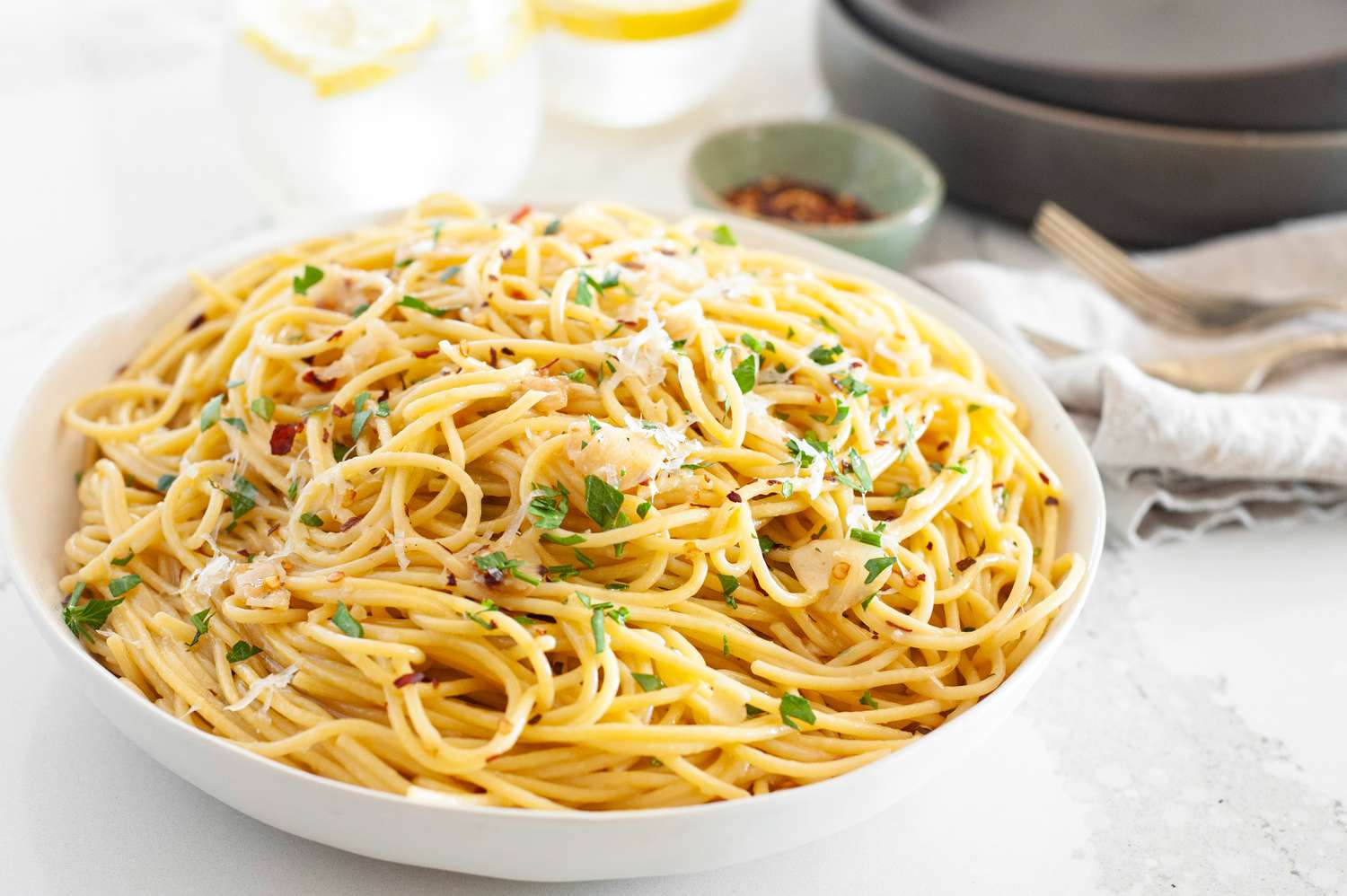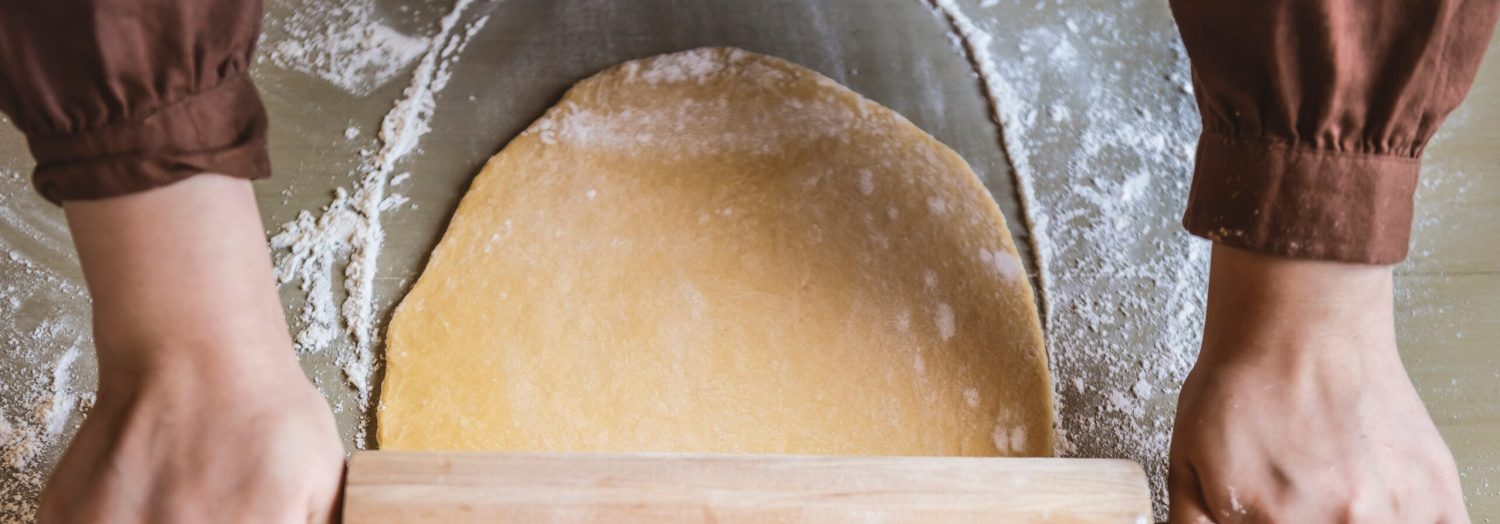Spaghetti aglio e olio is a classic Italian pasta dish that is both simple and delicious. With just a few basic ingredients, you can create a flavorful meal that highlights the essence of Italian cuisine. Perfect for a quick weeknight dinner or an elegant meal for guests, this dish is sure to impress.
While most of the ingredients for spaghetti aglio e olio are common pantry staples, you might need to pick up fresh parsley and extra virgin olive oil if you don't already have them. Fresh parsley adds a bright, herbaceous note to the dish, while high-quality extra virgin olive oil is essential for achieving the best flavor.

Ingredients for Spaghetti Aglio e Olio
Spaghetti: The base of the dish, providing a neutral canvas for the flavors.
Garlic: Thinly sliced to release its aromatic and pungent flavors.
Extra virgin olive oil: The primary fat used to create a rich, flavorful sauce.
Red pepper flakes: Adds a touch of heat and spice to the dish.
Fresh parsley: Chopped and added for a fresh, herbaceous finish.
Salt: Enhances the overall flavor of the dish.
Freshly ground black pepper: Adds a subtle, spicy note to balance the flavors.
Technique Tip for This Recipe
When cooking spaghetti, make sure to use a large pot with plenty of salted boiling water. This allows the pasta to move freely and cook evenly. For the garlic, slice it thinly and cook it slowly in the olive oil over medium heat to avoid burning. Burnt garlic can impart a bitter taste to the dish. If the sauce seems too dry after adding the pasta, gradually add some of the reserved pasta water to achieve the desired consistency. This starchy water helps to bind the sauce to the pasta, creating a silky texture. Finally, always taste and adjust the seasoning with salt and black pepper before serving to ensure the flavors are balanced.
Suggested Side Dishes
Alternative Ingredients
spaghetti - Substitute with linguine: Linguine has a similar texture and shape, making it a good alternative for spaghetti in this dish.
spaghetti - Substitute with zucchini noodles: For a low-carb option, zucchini noodles can be used to mimic the texture of spaghetti.
garlic - Substitute with shallots: Shallots provide a milder, sweeter flavor that can complement the dish if garlic is not available.
extra virgin olive oil - Substitute with grapeseed oil: Grapeseed oil has a neutral flavor and high smoke point, making it a suitable alternative to extra virgin olive oil.
extra virgin olive oil - Substitute with avocado oil: Avocado oil is another healthy oil with a mild flavor that can replace extra virgin olive oil.
red pepper flakes - Substitute with cayenne pepper: Cayenne pepper can add a similar level of heat to the dish as red pepper flakes.
red pepper flakes - Substitute with fresh chili: Finely chopped fresh chili can provide a fresh and spicy kick similar to red pepper flakes.
fresh parsley - Substitute with fresh basil: Fresh basil offers a different but complementary flavor profile to fresh parsley.
fresh parsley - Substitute with cilantro: Cilantro can add a fresh and slightly citrusy note to the dish, similar to fresh parsley.
salt - Substitute with soy sauce: Soy sauce can add a salty and umami flavor as an alternative to salt.
freshly ground black pepper - Substitute with white pepper: White pepper provides a similar spiciness with a slightly different flavor profile compared to freshly ground black pepper.
Other Alternative Recipes
How to Store or Freeze This Dish
- Allow the spaghetti aglio e olio to cool to room temperature before storing. This prevents condensation, which can make the pasta soggy.
- Transfer the cooled pasta to an airtight container. Make sure to use a container that is just the right size to minimize air exposure.
- Store the container in the refrigerator if you plan to consume the pasta within 3-4 days. The garlic and olive oil will continue to infuse the pasta with flavor.
- For longer storage, place the airtight container in the freezer. The pasta can be frozen for up to 2 months without significant loss of flavor or texture.
- When ready to reheat, if refrigerated, you can use a microwave or stovetop. For the microwave, place the pasta in a microwave-safe dish, cover it loosely, and heat on medium power in 1-minute intervals, stirring in between, until heated through.
- If reheating on the stovetop, add a splash of olive oil or a bit of the reserved pasta water to a skillet. Heat over medium heat, then add the pasta and toss until warmed through.
- If frozen, thaw the pasta in the refrigerator overnight before reheating. This ensures even reheating and maintains the texture of the spaghetti.
- To refresh the flavors, consider adding a bit more freshly chopped parsley and a sprinkle of red pepper flakes before serving. This will revive the dish and make it taste almost as good as freshly made.
How to Reheat Leftovers
Stovetop Method:
- Place a skillet over medium heat and add a splash of olive oil.
- Add the leftover spaghetti and toss gently to coat in the oil.
- If the pasta seems dry, add a few tablespoons of the reserved pasta water or plain water.
- Stir occasionally until heated through, about 3-5 minutes.
- Garnish with fresh parsley if desired before serving.
Microwave Method:
- Place the leftover spaghetti in a microwave-safe dish.
- Add a splash of olive oil or a few tablespoons of water to keep it moist.
- Cover the dish with a microwave-safe lid or plastic wrap, leaving a small vent.
- Microwave on medium power for 1-2 minutes, stirring halfway through.
- Check if it's heated evenly; if not, continue in 30-second intervals until warm.
Oven Method:
- Preheat your oven to 350°F (175°C).
- Place the spaghetti in an oven-safe dish and drizzle with a bit of olive oil.
- Cover the dish with aluminum foil to prevent drying out.
- Bake for about 10-15 minutes, or until heated through.
- Stir halfway through the reheating process to ensure even heating.
Boiling Water Method:
- Bring a pot of water to a gentle boil.
- Place the leftover spaghetti in a heatproof colander.
- Dip the colander into the boiling water for about 30 seconds to 1 minute.
- Remove and let the water drain off completely.
- Toss with a bit of olive oil and fresh parsley before serving.
Best Tools for This Recipe
Large pot: used to cook the spaghetti in salted boiling water until al dente
Skillet: used to heat the olive oil and cook the garlic and red pepper flakes
Tongs: used to toss the spaghetti in the skillet to coat it with the oil
Measuring cup: used to reserve 1 cup of pasta water
Knife: used to thinly slice the garlic and chop the fresh parsley
Cutting board: used as a surface to slice the garlic and chop the parsley
Colander: used to drain the cooked spaghetti
Wooden spoon: used to stir the garlic and red pepper flakes in the skillet
Serving bowl: used to serve the finished spaghetti aglio e olio
Pepper mill: used to freshly grind black pepper for seasoning
How to Save Time on This Recipe
Prepare ingredients in advance: Slice the garlic and chop the parsley ahead of time to streamline the cooking process.
Use pre-measured pasta: Measure out the spaghetti before starting to save time during cooking.
Boil water first: Start boiling the water while you prepare other ingredients to reduce waiting time.
Multitask: Cook the garlic and red pepper flakes while the spaghetti is boiling to synchronize cooking steps.
Reserve pasta water early: Scoop out the pasta water before draining to avoid scrambling later.

Spaghetti Aglio e Olio
Ingredients
Main Ingredients
- 400 g spaghetti
- 6 cloves garlic thinly sliced
- ½ cup extra virgin olive oil
- 1 teaspoon red pepper flakes
- ¼ cup fresh parsley chopped
- to taste salt
- to taste black pepper freshly ground
Instructions
- 1. Cook the spaghetti in a large pot of salted boiling water until al dente. Reserve 1 cup of pasta water, then drain the rest.
- 2. In a large skillet, heat the olive oil over medium heat. Add the garlic and red pepper flakes, and cook until the garlic is golden brown.
- 3. Add the cooked spaghetti to the skillet, tossing to coat in the oil. If needed, add some reserved pasta water to loosen the sauce.
- 4. Season with salt and black pepper to taste. Stir in the chopped parsley.
- 5. Serve immediately, garnished with extra parsley if desired.
Nutritional Value
Keywords
Suggested Appetizers and Desserts
More Amazing Recipes to Try 🙂
- Apple Coleslaw Recipe15 Minutes
- Jell-O Poke Cake Recipe45 Minutes
- Apricot Jam Recipe45 Minutes
- Gurkensalat German Cucumber Salad Recipe15 Minutes
- Brazilian Cheese Bread Recipe30 Minutes
- Fruit Salsa and Cinnamon Chips Recipe25 Minutes
- Layered Mexican Dip Recipe15 Minutes
- Bacon Jam Recipe50 Minutes

Leave a Reply